Utrecht has reconstructed yet another arterial road. The Croeselaan was a 4-lane road, leading to an area in the city that had been designed with only the private car in mind in the early 1970s. That has completely changed. Most of the street level is now dedicated to people. The redesign of Croeselaan is as environmentally friendly as possible. The opening of an art route, last Friday, marked just one step in the current redesign of the station area, a process that is far from finished.

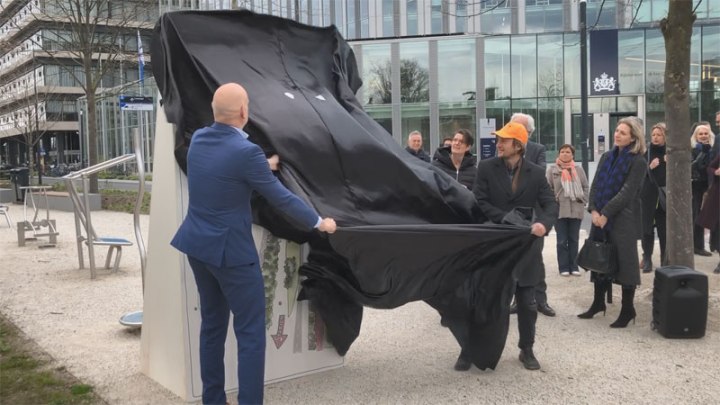
After nearly 10 years of reconstruction in the Utrecht Station area finally some parts of it are nearing completion. Later this year, in August, the final part of the largest bicycle parking in the world will be opened under the station square on the east side that will open in May. On this west side of the station, most of the reconstruction of Jaarbeursplein (Exhibition and Convention Centre Square) was finished now and so was the Croeselaan leading to it. The Croeselaan used to be a 4-lane through road with one way cyclepaths next to it, but motor traffic can no longer continue on Jaarbeursplein. Croeselaan became a dead-end street with just one travel lane in each direction and a reduced speed of 30km/h. The reconstructed road ends in the entrance of a new underground parking garage. This garage came in the place of the brutalist multi-storey building that used to house car parking on the square. With that building and the through route gone there no longer is a car traffic flow on Jaarbeursplein. This makes it possible to walk from the central station to the halls of the convention centre without having to cross car traffic. The new design of the square turns that walking route into a very attractive stroll. The new square can also be used for events. A large audience can take place on the steps over the Jaarbeursplein Bicycle Parking Garage that lead to the station hall. The extra space that became available on Croeselaan has also been dedicated to people. The main cycle route became much more recognisable as a 4.5 metre wide bi-directional separate cycle road. The former median became a linear park. Many mature trees were relocated here and works of art, which had to make way for a number of redevelopments elsewhere, also found a new home at this location. The art walk was opened last Friday by the alderman for the redevelopment of the station area, Victor Everhardt, together with a resident.

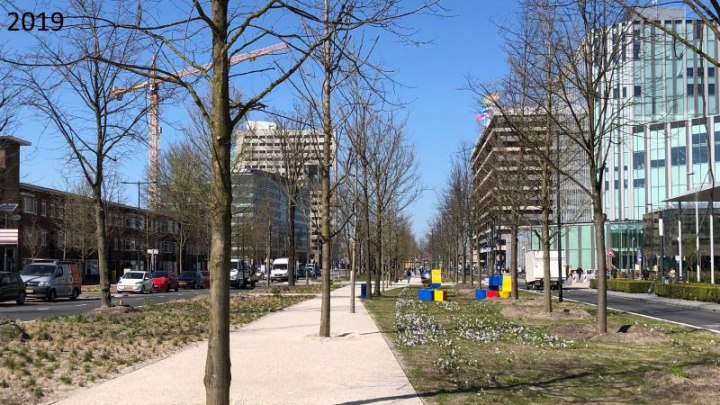
The reconstruction of Croeselaan had started in 2011 when the first trees were removed. Some could be relocated to other places in the city. Other (unhealthy) trees had to be cut. In 2012, more trees were (re)moved and the road works really started. Pipes and cables leading to the station area had to be replaced and the street was already then turned into a dead-end street. The parking garage on Jaarbeursplein was demolished and a large hole was dug for the new underground garage.


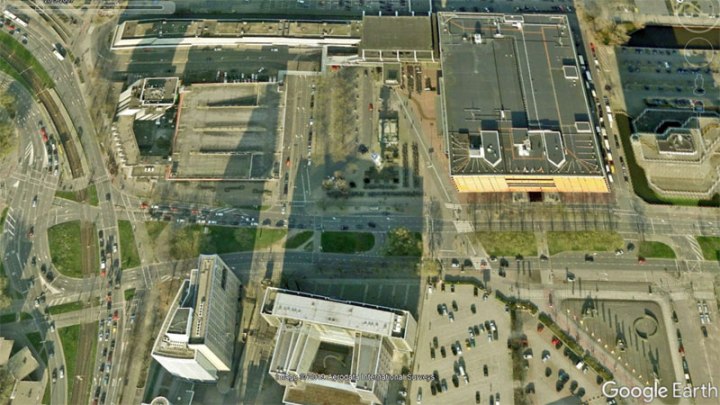
It was not the first time this area of the city was redeveloped. Since this used to be a long way from the historic city centre this was where large military compounds were located and the city’s cattle market. The cattle market was moved much further out-of-town in the 1960s and later the military compounds were also relocated. This made this vast area just west of the central station available for the Utrecht Convention Centre that had been located on Vredenburg up to that time. They moved to this “out of the centre” area to have more space for car parking. In the current redevelopment the Convention Centre’s vast parking areas were moved further out-of-town to the west side of the exhibition halls. The former parking lots are now being developed with a lot of high rises. So the Convention Centre is pushed further out-of-town, as it were, once again, although most of its exhibition and convention halls stay in much the same place.

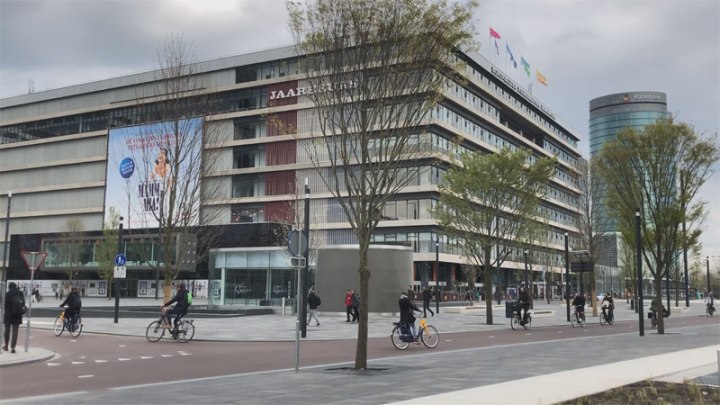
The city of Utrecht redesigned the Croeselaan in the most sustainable way possible. The street lights are solar-powered. The traffic signs are made of bamboo, because that wood grows quickly while absorbing a lot of CO2. The surface of the car lanes was partly made of recycled material and the cycleway surface is made of a type of concrete that requires less cement, so its construction leads to less CO2 emissions. Even the not so fertile original soil of the median was reused, mixed with compost it became suitable for the new park. This meant many truck rides to bring new soil were not necessary. A number of trees came from other places in the city and also the art was recycled. The street now has more trees than there were before the reconstruction.
101 trees planted on Croeselaan in November 2018
13 sycamores
8 sweet chestnuts
3 black walnut trees
12 tulip trees
13 pin oaks
9 common limes
15 Dutch elms
28 lime trees
The 8 works of art were placed in March 2019. Three works of art had been made for the medians of the Jaarbeursplein roads in 1971. Since those medians no longer exist these bronzes found a new home here. The park is right in front of the headoffice of Rabobank. That bank donated two works of art. The city also placed works that were more recently required. One of which is “Living Sculptures” by Christian Jankowski from 2007. The three bronzes portray street performers who in turn mimic bronze sculptures by standing motionless in the street. One of these three statues depicts Che Guevara, which led to controversy. Right wing politicians protested against “the glorification of this Marxist terrorist” and the statue was consequently smeared with red paint. But it was cleaned and will stay. The city does consider a sign explaining that this is a statue of someone pretending to be Che, who became an emblem in popular culture, it is not meant to glorify the man himself.

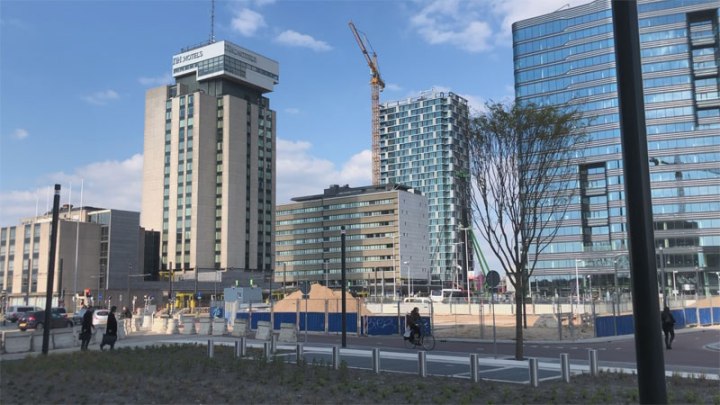
So are Jaarbeursplein and Croeselaan finished now? Far from it! On Jaarbeursplein two highrises are currently under construction and a whole block of housing will be removed on Croeselaan to make room for even more tall buildings and better connections (mainly for cycling) from the Moreelsebrug for walking and cycling to a new residential area further west. But at least some of the building sites have become more beautiful places for people now. After a decade of building activities that was what a lot of people in Utrecht were longing for.
My video portrait of the Croeselaan / Jaarbeursplein transformation.


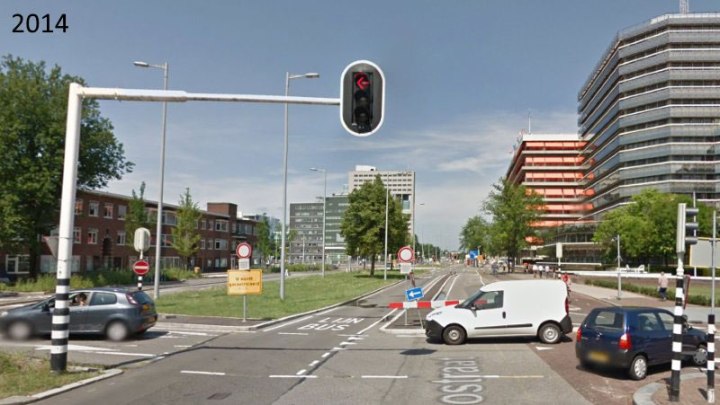
The Netherlands practices a quality of city planning not found anywhere else in the world. What they create makes you want to live there. And when you live there it makes you feel good. I do not know about anyone else but it resonates clearly with me.